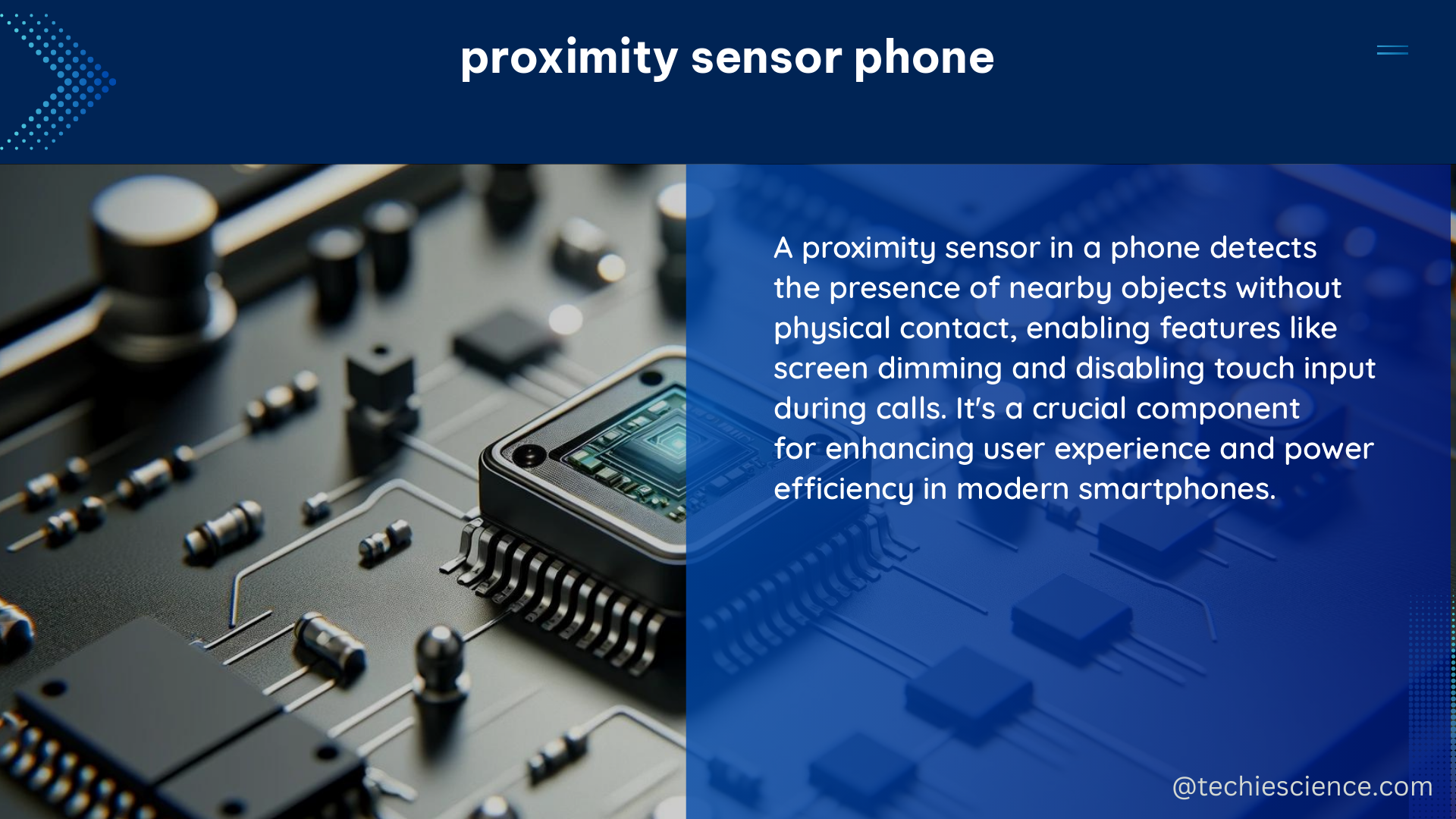A proximity sensor in a phone is a device that detects the presence of nearby objects without any physical contact. It typically emits an infrared beam and detects changes in the return signal to determine when an object is close to the phone. Proximity sensors are commonly used to turn off the screen when a user is on a call to save battery life and prevent accidental screen touches from the cheek. They can also be used for imaginative purposes, such as controlling media playback or locking and unlocking the phone based on its position.
Technical Specifications of Proximity Sensor Phone
| Specification | Range |
|---|---|
| Proximity Sensor Range | 1-2 inches (Samsung Galaxy S III) |
| Proximity Sensor Type | Infrared or Capacitive |
| Power Consumption | Low |
| Operating Temperature | -20°C to +70°C |
| Storage Temperature | -40°C to +85°C |
| Sensor Technology | Digital or Analog |
| Output Signal | Analog or Digital |
| Mounting | Surface-mount or Through-hole |
Proximity sensors on phones typically have a range of a few centimeters to a few inches, depending on the phone model and manufacturer. For example, the proximity sensor on the Samsung Galaxy S III has a range of about 1-2 inches.
In addition to proximity sensors, phones also contain a variety of other sensors that can be used for a variety of purposes. These include accelerometers, gyroscopes, magnetometers, barometers, light sensors, and temperature sensors. These sensors can be used for activities such as human activity recognition, location tracking, and environmental monitoring.
Proximity Sensor Phone Applications

Proximity sensors on phones can be used in conjunction with other sensors to provide more detailed information about the phone’s surroundings. For example, a proximity sensor can be used in combination with a barometer to determine the altitude of the phone. Proximity sensors can also be used in combination with other sensors to improve the accuracy of human activity recognition.
Proximity sensors on phones can be affected by a variety of factors, including the orientation of the phone and the presence of other objects in the vicinity. To account for these factors, data preprocessing techniques such as signal processing and standardization can be used to improve the accuracy of proximity sensor readings.
DIY Proximity Sensor Phone
To create a DIY proximity sensor phone, you will need the following materials:
- A phone with a proximity sensor
- A breadboard
- Jumper wires
- A resistor
- An infrared LED
- A phototransistor
Here are the steps to create a DIY proximity sensor phone:
- Connect the infrared LED and the resistor to the breadboard, with the longer leg of the LED connected to the positive rail and the shorter leg connected to the resistor.
- Connect the other end of the resistor to the digital output pin on the phone.
- Connect the phototransistor to the breadboard, with the flat side facing towards the infrared LED.
- Connect the other end of the phototransistor to the negative rail on the breadboard.
- Connect a jumper wire from the negative rail on the breadboard to the ground pin on the phone.
- Write a program on the phone to turn on the digital output pin when the proximity sensor is triggered.
- Test the proximity sensor by bringing an object close to the infrared LED and observing the output on the phototransistor.
By following these steps, you can create a DIY proximity sensor phone that can be used for a variety of purposes, such as saving battery life, preventing accidental screen touches, and controlling media playback.
Conclusion
Proximity sensors on phones are devices that detect the presence of nearby objects without physical contact. They typically have a range of a few centimeters to a few inches and can be used for a variety of purposes, including saving battery life, preventing accidental screen touches, and controlling media playback. Proximity sensors can also be used in conjunction with other sensors to provide more detailed information about the phone’s surroundings.
References
- Proximity Sensor Linked to Cell Phone
- Proximity Sensor Applications in Smartphones
- DIY Proximity Sensor Phone
- Proximity Sensor Accuracy and Reliability
- Proximity Sensor Data Analysis

The lambdageeks.com Core SME Team is a group of experienced subject matter experts from diverse scientific and technical fields including Physics, Chemistry, Technology,Electronics & Electrical Engineering, Automotive, Mechanical Engineering. Our team collaborates to create high-quality, well-researched articles on a wide range of science and technology topics for the lambdageeks.com website.
All Our Senior SME are having more than 7 Years of experience in the respective fields . They are either Working Industry Professionals or assocaited With different Universities. Refer Our Authors Page to get to know About our Core SMEs.